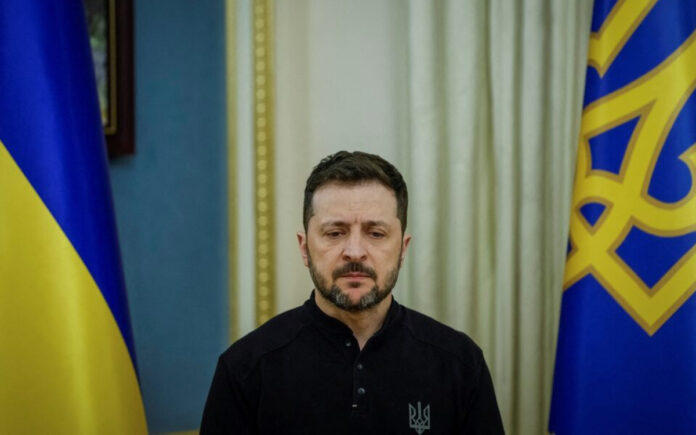Moscow/Kyiv: Russia and Ukraine have accused each other of violating a one-day Easter ceasefire, highlighting the ongoing hostilities despite efforts for a temporary halt in fighting. The ceasefire, ordered by Russian President Vladimir Putin, was meant to pause military activity along the front lines until midnight Moscow time (2100 GMT) on Sunday.
The ceasefire was presented as a gesture of goodwill during the shared Orthodox and Western Easter, but both Moscow and Kyiv claimed the other side had failed to honour it.
Ukrainian President Volodymyr Zelenskiy alleged that Russian forces merely feigned adherence to the truce while launching continued artillery attacks late Saturday and into Sunday.
“Either Putin does not have full control over his army, or the situation proves that in Russia, they have no intention of making a genuine move toward ending the war, and are only interested in favourable PR coverage,” Zelenskiy posted on social media platform X.
According to Zelenskiy, Russia had launched 26 assaults from midnight until midday local time (0900 GMT) on Sunday. Earlier, he had said Moscow was “trying to create a general impression of a ceasefire” while simultaneously inflicting continued losses on Ukrainian forces at the front.
In contrast, Russia’s Defence Ministry placed the blame squarely on Ukraine, accusing it of breaking the ceasefire more than 1,000 times. It claimed Ukrainian forces had fired on Russian positions 444 times and launched over 900 drone attacks, including strikes on Crimea and the Russian border regions of Bryansk, Kursk, and Belgorod.
“As a result, there are deaths and injuries among the civilian population, as well as damage to civilian facilities,” the Russian Defence Ministry stated.
While Ukraine’s military acknowledged a reduction in frontline activity, it denied responsibility for breaking the truce. Some Russian military bloggers also noted a decrease in fighting along parts of the front, although battlefield reports from either side remain unverified by independent sources.
The breakdown of the Easter ceasefire underscores the difficulty of achieving a lasting peace, casting doubt on the diplomatic efforts led by U.S. President Donald Trump, who has pledged to bring an end to what he terms a “bloodbath.” Trump and Secretary of State Marco Rubio recently signalled that the U.S. could withdraw from its mediation efforts unless visible progress is made soon.
Also Read: US Soybean Exports to China See Significant March Growth, But Brazil’s Harvest Looms
Trump’s Mediation Drive
Positioning himself as a peacemaker, Trump has repeatedly warned of the risks of escalation in the conflict, which his administration now frames as a U.S.–Russia proxy war—mirroring rhetoric often used by Moscow. In March, Kyiv accepted Trump’s proposal for a 30-day ceasefire, but Putin said critical verification mechanisms were still unresolved.
Despite agreeing in principle to avoid attacks on energy infrastructure and maritime targets, both Russia and Ukraine have continued to accuse each other of violating those terms.
Zelenskiy reaffirmed Ukraine’s readiness to extend the ceasefire by 30 days, contingent on Russian compliance. If hostilities persisted, he said, Ukraine would continue to defend itself.
In response, Putin instructed his top military commander, General Valery Gerasimov, to be prepared to respond “in full” should Ukraine break the truce.
At present, Russia controls nearly one-fifth of Ukrainian territory, including Crimea, annexed in 2014, and large swathes of the eastern and southern regions—Luhansk, Donetsk, Zaporizhzhia, and Kherson.
Also Read: King Charles and Queen Camilla Greet Onlookers After Easter Service at Windsor
When announcing the ceasefire before attending an Orthodox Easter service, Putin suggested the truce would reveal Ukraine’s willingness and capability to engage in peace. He thanked Trump, Chinese President Xi Jinping, and leaders of BRICS nations for their continued mediation efforts.
The European Union reacted with skepticism to the ceasefire proposal, saying Russia could end the war unilaterally if it chose to. Meanwhile, United Nations spokesman Stephane Dujarric reaffirmed the UN’s backing for “meaningful efforts towards a just, lasting and comprehensive peace that fully upholds Ukraine’s sovereignty, independence and territorial integrity.”
As Orthodox and Western Easter coincided this year, Zelenskiy used the occasion to call for resilience and unity among Ukrainians.
“We know what we are defending. We know what we are fighting for,” he said in a video message filmed in front of Kyiv’s Saint Sophia Cathedral, where he wore a traditional embroidered Ukrainian shirt.



